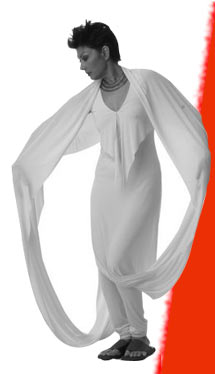It was first during The Mahabharata by Peter Brook that I really started understanding the power of art as a language. It was by no means my first encounter with this. As early as 1963 I had seen my mother’s choreographic work Memory Is A Ragged Fragment Of Eternity, a piece dealing with the trauma of a young bride being coerced for further dowry payments, and being driven to suicide. I had often heard the story of how a Tamil Nadu Minister first saw it and later instituted an enquiry to understand the phenomenon only to find it wide spread enough to deserve the name that it now has _ dowry death.
Then for years I used the arts, in all their forms, born and unborn, traditional and inventive – to reach people with messages as disparate as the need to use smokeless chullahs to avoid hazards akin to constant smoking; the need for family planning; communal violence and its effects; protecting the girl child and much else. With sound proof of the efficacy of the language to reach people, and with statistical evidence to suggest long recall of the messages, I approached governments and funding bodies to use these methods for development issues, for changing attitudes and beliefs which blocked the path f people improving their own lives. And more often than not I was told, “We don’t fund dance and song”! Exasperated I would ask them, “When you run a newspaper advertisement or launch a poster campaign, are you funding the printing industry? Then this is the same. The performance is merely the conduit, the placebo, the sugar coated pill, to ensure that the receiver is open to the message, accepts it, doesn’t raise walls before you can reach out”.
It was with some excitement therefore that I started seeing tiny changes in the attitudes of the ESTABLISHMENT. The first indicator was two years ago when the Indian Institute of Public Health organized its first seminar to understand the use of the arts for health education. The next was the discovery of a Singapore based organization named Freedom To Create who started awarding prizes world wide for artists using the arts for change. My production Unsuni was one of the early winners. Soon this organization was beginning to tour the world to showcase such work, not only performance and writing but photo essays, paintings, installations. Earlier last year I was asked to present the Freedom To Create exhibition coming to India for the first time. The range of work, especially from war torn countries and those with strong censorship, was moving. Here were creative people breaking the fearful silence. One of my favourites was a performance piece created by a man in Afghanistan, a country, like India, known for high levels of corruption. Dressed as a policeman, he stood at a crowded traffic juncture stopping people with a whistle. When the stopped car or two wheeler came abreast, he gave them the equivalent of ten rupees with an apology for earlier times when they might have had to pay a bribe to the police!
It was with even greater delight that I attended, a few days ago, a conference on entertainment education with participants from all over the globe, with every kind of arts intervention, from TV shows to board games, from films to Nintendo like computer games and everything in between. There were some artists but many more academics, economists, sociologists, funders and administrators of public funds. And they engaged in serious talk, trying to find good practices and effective ways of reaching people worldwide in a world where communications, real communications, heartfelt communications have practically broken down in the deluge of sms, mms, social networking and the like.
I hope that some of our policy makers take note. After all using song and dance and painting and sculpture to inform and educate the young has been in our tradition since times immemorial.

